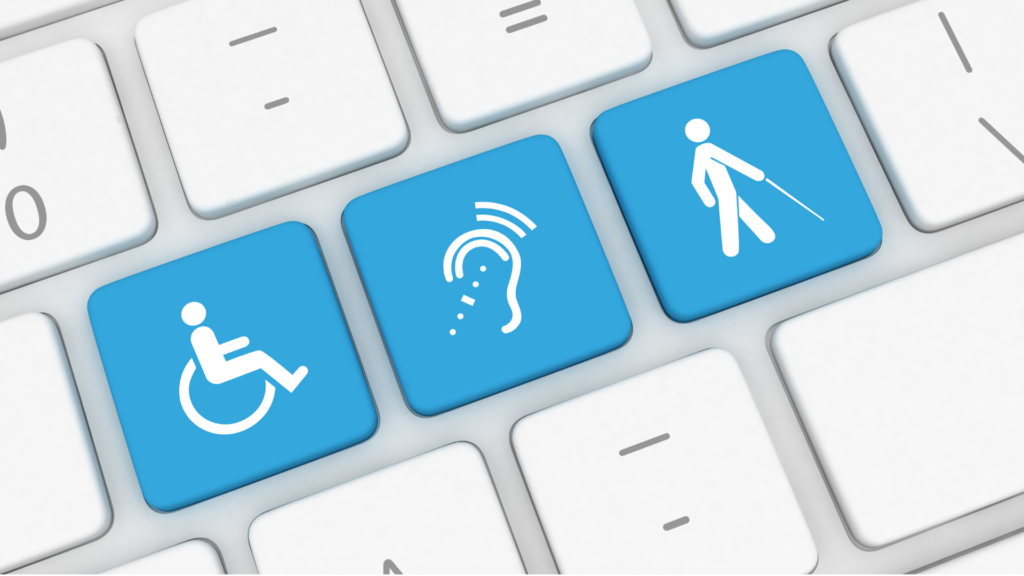
Making websites accessible means creating them so everyone can use them, even people with disabilities. With rules and regulation in place, it’s important to start the discussion with your website designer – is my website accessible?
Why Follow the Rules?
While there are laws, like the Americans with Disabilities Act (ADA), that say websites need to be accessible to everyone. It’s not just about following rules, it’s about providing an excellent user experience for everyone. Put simply it’s the right thing to do. Making websites accessible means not leaving anyone out.
Different Disabilities and Website Design Elements
People with different disabilities access and use websites in varied ways to accommodate their specific needs. Individuals with vision issues often rely on tools that audibly read out the text on the website, enabling them to understand the content without seeing it.
For those facing hearing challenges, videos on websites should have captions to ensure the content is accessible, as they might not be able to hear the audio. People with physical disabilities, such as those who cannot use a mouse, might need to navigate websites using a keyboard or other assistive devices.
Lastly, individuals with learning disabilities benefit from websites that use clear and simple language, as this makes it easier for them to comprehend complex information.
This diverse range of adaptations highlights the importance of making web content accessible and inclusive for all users.
Key Principles for Inclusive Web Design
When designing a website, it’s crucial to prioritize accessibility and user-friendliness. Ensure the site is easy to read and understand by utilizing clear headings and avoiding overly small text.
It’s important to make the website keyboard-friendly, catering to users who rely on keyboards instead of a mouse.
Communication should be straightforward and inclusive, using simple language and clear instructions to accommodate individuals who struggle with complex language.
Additionally, the website should be responsive, meaning it should function seamlessly across various devices, including phones, tablets, and computers, to provide a consistent user experience.
Real-Life Success Stories
Companies like Apple have made their websites and products easy for everyone to use. This inclusive approach not only benefits users with disabilities but also enhances the experience for all users.
Good design practices positively impact Search Engine Optimization (SEO). Accessible websites tend to rank higher in search results because search engines favor sites that are user-friendly and accessible to a diverse audience.
Technology changes fast. Keep learning about new ways to make your website, high quality for everyone. This helps your website stay up-to-date and user-friendly. If you’re ever in need of someone to help you with Calgary Web Design, please do not hesitate to reach out.
Remember, making your website accessible is not just about rules; it’s about including everyone and making the internet a better place for all.
